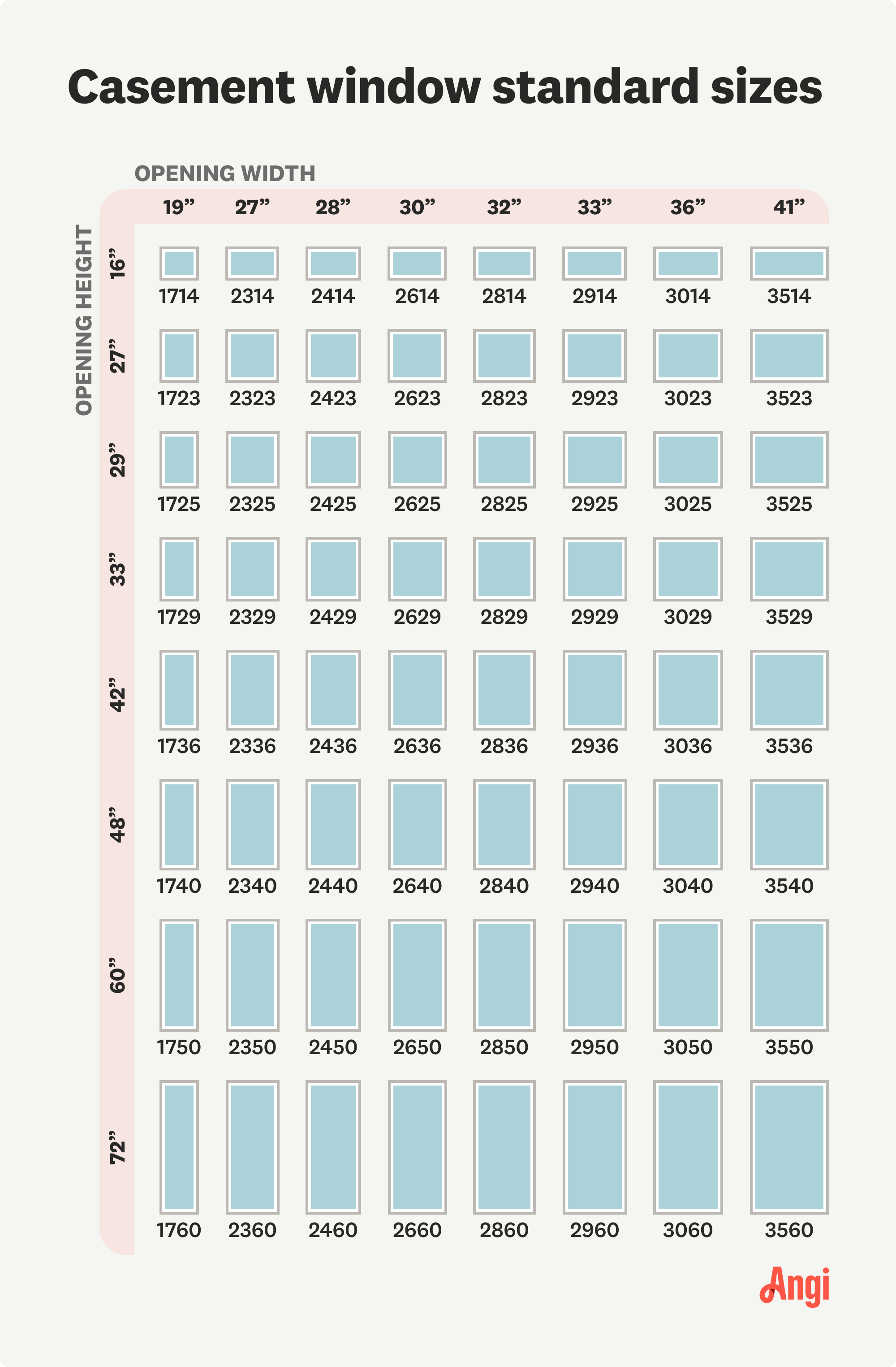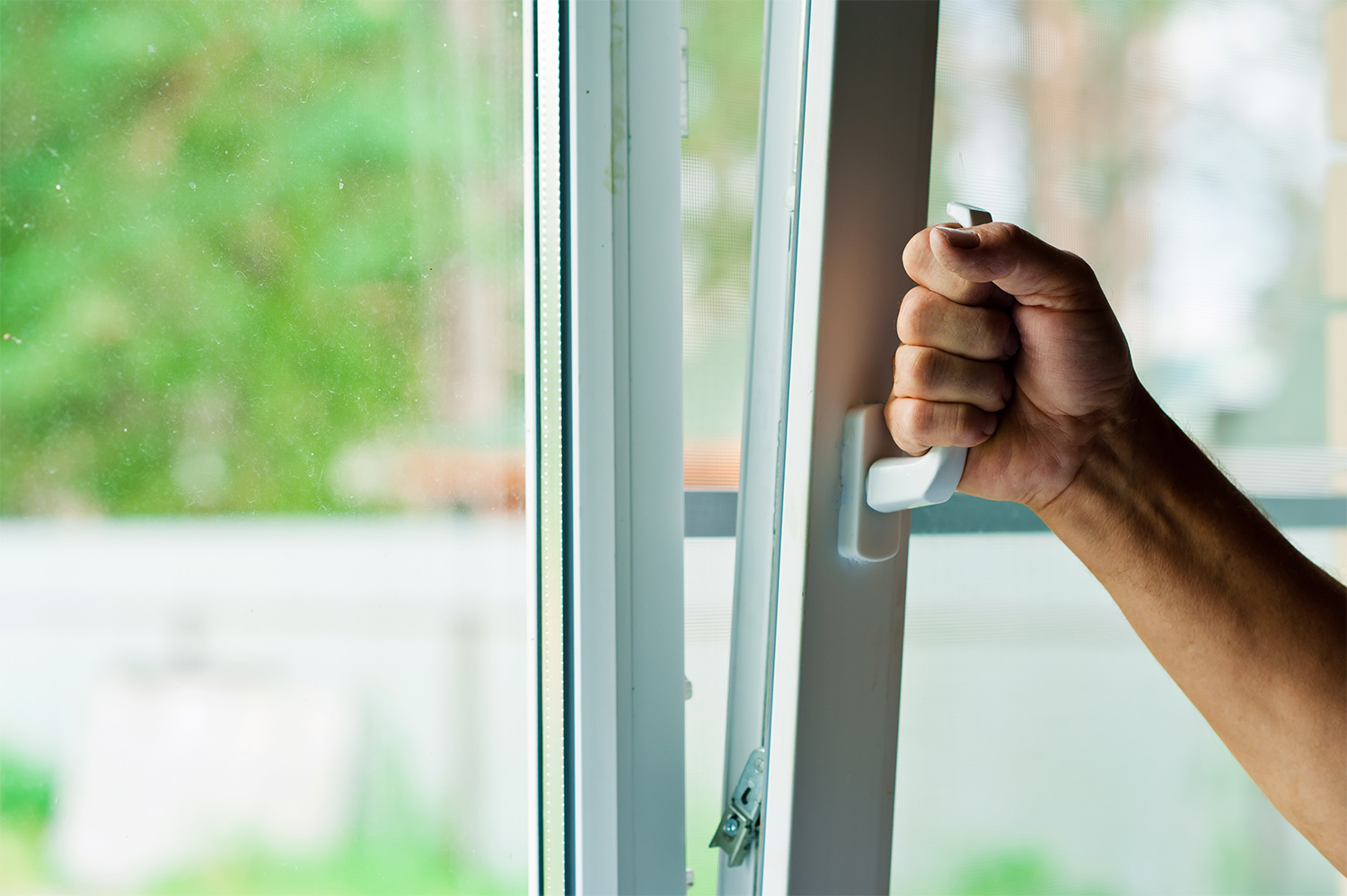
A new arched window can boost curb appeal, home value, and energy efficiency. Learn how much arched windows cost and what factors to consider.
In case you can’t decide on casement window size


The most common casement window size is 24 inches wide by 36 inches tall, but sizes vary widely.
Casement windows can range from 17 to 36 inches wide and 24 to 72 inches wide.
If you’re replacing an existing casement window, you can keep costs down by keeping your window size the same to avoid having to reframe.
You can install multiple casement windows side-by-side by adding mullions, which is especially common in bay windows.
Casement window sizes range widely, with widths between 17 inches and 36 inches and heights between 24 and 72 inches being the most common. The size of your casement window will depend on the existing wall opening, the amount of natural light and ventilation you want in your space, and privacy and safety concerns, which are often based on the type of room you’re installing your window in.

The most common casement window size is 24 inches wide by 36 inches tall, but dimensions range quite a bit. You’ll often see widths ranging from 17 inches on casement windows that are a part of bay windows up to 36 inches on standalone casement windows, and heights of 24 inches in some bathrooms and basements up to 72 inches in main living areas.
Casement window sizes vary by room, although there are exceptions, and you can always let personal preference guide you when sizing your windows. In most cases, you’ll see smaller casement windows in basements due to space limitations, and in bathrooms, as windows need to sit a certain height above your bathtub and should be smaller to offer more privacy.
The largest casement windows are typically in living areas, including living rooms and dining rooms, where privacy isn’t as much of a concern and you’re not limited by space constraints.
| Room | Common Sizes (Inches) |
|---|---|
| Basement | 19x16 |
| 19x29 | |
| 24x36 | |
| 27x27 | |
| Bedroom/bathroom | 27x27 |
| 24x36 | |
| 36x48 | |
| Living Area | 2436 |
| 36x48 | |
| 36x60 | |
| 36x72 |
Because of space constraints, casement windows in basements are often smaller than you’ll find in bedrooms, bathrooms, and living areas. Unless you have a walk-out basement or a window well that your window opens up into, you have minimal space above the ground level outside for a wall opening. In these cases, you’ll see the smallest casement windows.
Even in walk-out basements and for windows that open into window wells, you have less space than you would on a main floor in your home, so casement window sizes will be smaller.
Casement windows do make for excellent egress windows since the sash is the size of the entire wall opening. If you’re using a casement window as an egress window, you’ll need to make sure you abide by local building codes for egress window sizes. In most cases, they need to be at least 20 inches wide and 24 inches tall.
Casement windows are a good option in bathrooms because they provide maximum ventilation. Bathrooms come with privacy concerns, and many bathroom windows sit in the shower wall at 60 inches above the floor for privacy. In a standard home with 8-foot ceilings, that leaves you just 36 inches of height to work with, and in reality, you only have 24 inches of height because you want the top of your window to be at least a foot below your ceiling.
Most casement windows are taller than they are wide, so the height restriction in a bathroom also means that casement windows tend to be thinner in bathrooms. Casement windows in a bathroom are commonly 17 or 19 inches wide by 24 inches tall.
In living areas like living rooms, kitchens, and dining rooms, there’s less of a need for privacy, and you don’t have as many window size restrictions. As such, casement window sizes in living areas tend to be larger than in most other parts of the home.
In a kitchen, your windows above your countertops are normally shorter than they would be in a living room or dining room, so the most common dimensions are 24 inches wide by 36 inches tall and 30 inches by 36 inches tall.
Living rooms and dining rooms have few restrictions and don’t need as much privacy as bathrooms and bedrooms, so you’ll find the largest casement windows in these areas. Sizes can range from 17 inches wide if they’re a part of a bay window to 36 inches wide if they’re standalone windows, and 36 inches to 72 inches tall.

Most homeowners choose to keep their window size the same when replacing windows. Casement window costs will increase dramatically if you need to adjust the wall opening size, so knowing how to measure for windows is a useful skill to have. Luckily, the process is simple and just requires a tape measure. Here’s a breakdown of how to measure.
Measure between the inside jamb on the left and the inside jamb on the right at the top of your window.
Repeat the same measurement in the middle and at the bottom.
Record the shortest of the three measurements for the width.
Measure between the top jamb and the windowsill on the left side of the window.
Repeat the measurement in the middle and on the right side of the window.
Record the shortest of the three measurements for the height.
There are three important factors to consider that can help you decide on the right size casement window for your home.
The biggest factor affecting your casement window size is the size of your existing wall opening. When replacing windows, most homeowners just install a new window with the exact dimensions of the old window. Making the opening bigger or smaller will significantly drive up window replacement costs since you’ll need structural changes and build-back inside and outside your home.
Privacy is something to consider carefully in bathrooms and bedrooms, and smaller casement windows are more popular in these areas as a result. In bathrooms, your window should sit about 60 inches above your floor if it’s located in the shower, which more or less limits you to a maximum window height of 24 inches.
You have fewer restrictions in bedrooms, but going a bit smaller than you would in a living room or dining room is wise to maintain some privacy and limit sunlight coming in in the morning.
Finally, you should consider building code requirements, which will normally dictate minimum casement window sizes in basements and maximum casement window sizes in bathrooms.
Casement windows are great for egress windows since the sash leaves more room for escape than any other type of window, but you have to meet minimum egress window dimensions for it to be a legal egress window. The minimum height for an egress window is often 24 inches, and the minimum width is 20 inches. Be sure to check your local code requirements, and size your window so that it can open fully in your window well.
There may be maximum window dimensions for bathroom casement windows, too. Either hire a professional window company near you to help size your window, or read through the local building codes carefully to make sure your window replacement is legal. If you’re replacing windows as opposed to installing new construction windows, this likely isn’t something you need to worry about.
If your casement window is too small for your liking and you want more natural light or ventilation in your space, you should hire a window contractor to enlarge the window opening for you. This will increase your window replacement costs significantly, but bigger windows do tend to increase home value, as do new windows, so it could be worth the investment.
If your existing casement window is too large, and you want more privacy in your space or less natural light in a bedroom, the easiest solution is to install window treatments that boost privacy and block sunlight. Blackout curtains, Roman shades, and plantation shutters are all good options. Alternatively, you can choose to have your pro reframe the wall opening to make it smaller, but you’ll see much higher costs for the build-back, especially to match the existing siding outside.
From average costs to expert advice, get all the answers you need to get your job done.

A new arched window can boost curb appeal, home value, and energy efficiency. Learn how much arched windows cost and what factors to consider.

Dealing with a damaged window frame? Learn how much window frame replacement costs and what factors have an impact on your total.

Is it time to upgrade your home’s windows? Learn more about window replacement costs, considering various window sizes, styles, and energy efficiency.

When seeking the best replacement windows for old houses, the home’s style is key. Learn everything about what selecting replacement windows entails.

Discover the cost to replace window locks. Learn about price factors, labor rates, and tips to save on your window lock replacement project.

Window film, inserts, treatments, and more can improve your window’s energy efficiency. Read this guide to learn how to make old windows more energy-efficient.